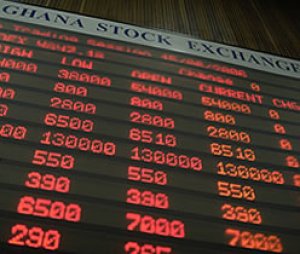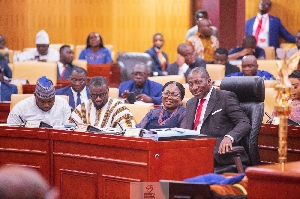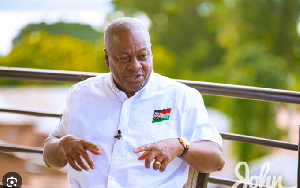The team working on Ghana’s commodities exchange, the first in West Africa, is confident trading on the exchange will commence in the first quarter of 2017 - starting with Maize, Rice and Soy-beans.
Launched by President John Mahama a year ago, the Ghana Commodities Exchange (GCX) will serve as a common platform for trading local commodities in a transparent and uniform manner with a view to giving farmers a ready market and improving livelihoods.
With institutions like Wienco and the National Food Buffer Stock Company (NAFCO) in the fray, Project Coordinator Robert Dowuona Amoo is confident trading will see a soft launch this October or November, with full-scale operation and trading taking off in the first quarter of 2017.
Robert Owoo told the B&FT that the GCX is targetting harvests from the second half of this year to begin trading, adding that warehouses are being upgraded to receive stocks of the various produce.
“There are enough warehouses existing out there that can help commence the project, but they are in various stages of disrepair and some of them need various upgrades with the attachment of laboratories to grade the crops,” he said.
The private sector, he said, can use the opportunity to invest in warehouses since the ones presently in the system are not enough.
“We are talking to the private sector to actually also go into investing in warehouses. We need bigger warehouses,” he said.
For the exchange to run efficiently without any hitches, it needs about five or six 10,000metric tonne capacity warehouses in strategic locations across the country, he said.
“So far Wienco, an agricultural company, has two 10,000metric tonne capacity warehouses in Tumu and Tamale, both in the northern part of the country -- but we need more, and these warehouses need laboratories attached to them. These are some of the things we are doing as part of our engagements with them,” Mr. Amoo said.
“This project will transform the lives of Ghanaians in every sector of the economy. Whether it is agriculture, health, education or infrastructure, the GCX will create new jobs, empower our farmers and improve transparency in prices, and efficiency will be achieved.”
The GCX will be regulated by the Securities and Exchange Commission, once the new Securities Industry bill is passed into law.
Additional legal instruments to support warehousing and operational manuals for the exchange will be added when the law comes into force, he added.
Modelled along the lines of the Ethiopian exchange, the GCX will be a membership-based system wherein seats will be sold to members who may be farmers or their representatives, and members who are buyers like industrial processors or exporters.
The members on the selling side will send their commodities to designated warehouses of the exchange, where the commodities will be graded, certified, weighed and stored.
On the buying side, a clearing house takes buyers’ funds into a pre-trade cash account so that when the seller and buyer agree on price and quantity the cash is transferred to the seller.
According to Robert Dowoo, the funds will be transferred to the seller the next day after the transaction, which is known as the “T+1” clearing and settlement system. Exchanges elsewhere could take two or three days to transfer funds to sellers.
For the buyer also, the warehouse receipt will be taken from the seller and given to him/her on the same date. The exchange thus becomes the third-party guarantor.
The exchange will start with spot trading - hoping to build trust, and add futures trading later.
Since 2008, several African countries have established commodity exchanges, with the most successful ones being in Ethiopia and South Africa.
Backed by a strong warehouse receipt system, Ethiopia’s commodities exchange has now become the blueprint for many African countries that seek to establish one.
Business News of Tuesday, 21 June 2016
Source: B&FT

















